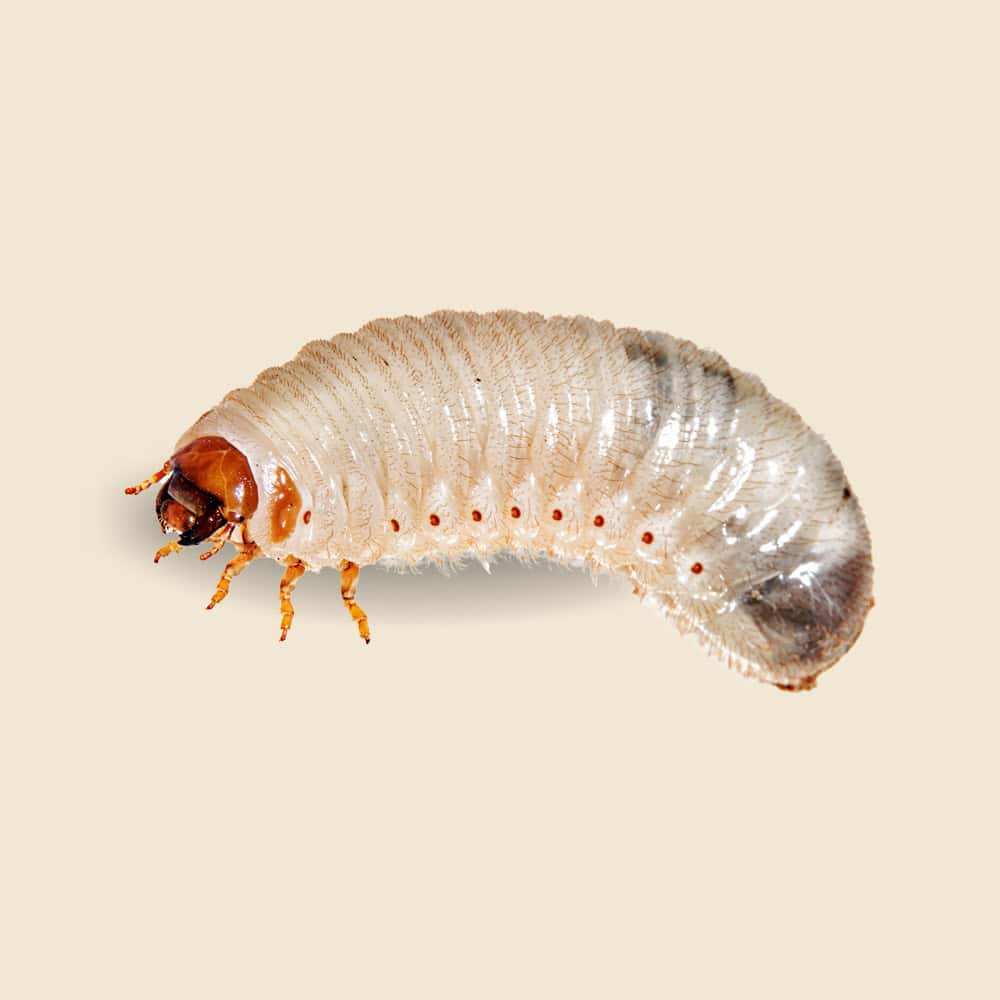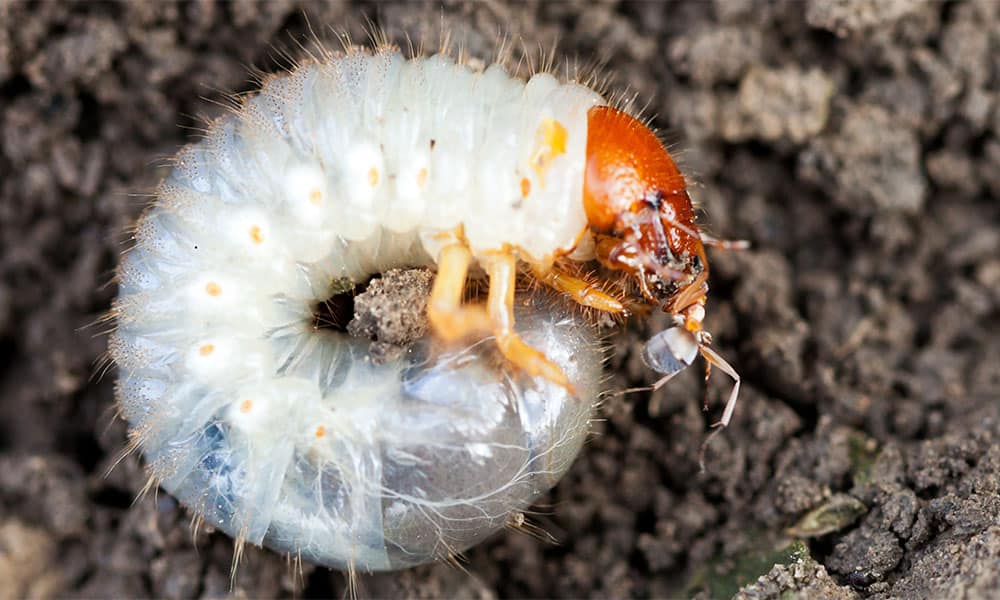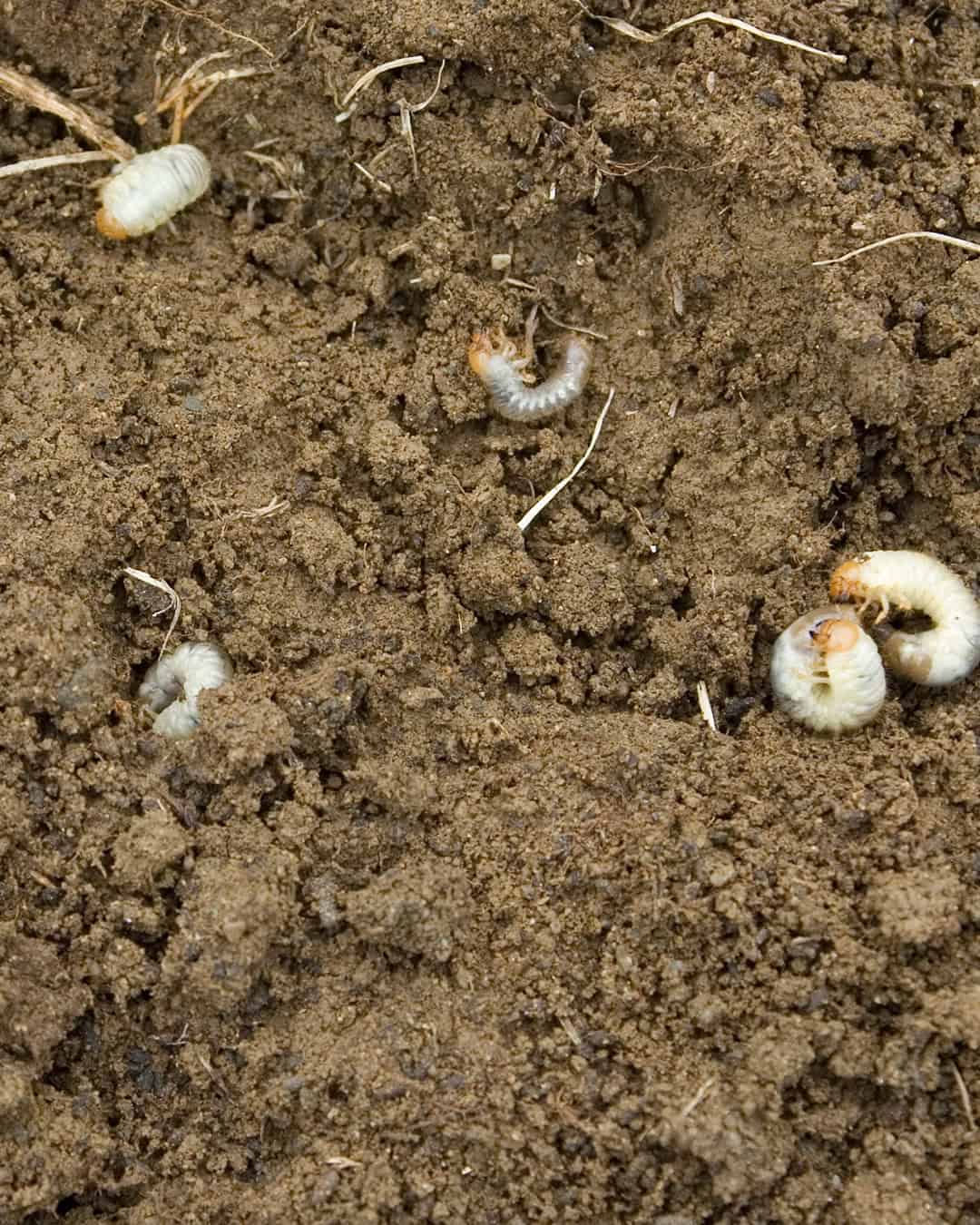White Grub Facts & Information
White grubs, the larval stage of various beetles, such as masked chafers, “May Beetles”, “June Bugs”, are notorious for their root-feeding behavior, causing extensive damage to lawns and gardens. These pests can devastate turfgrass, leading to brown patches and weakened plants that are susceptible to further damage.

Phyllophaga larvae
What You Need To Know About White Grubs
What do white grubs look like?
White grubs are the larvae of various beetles, such as Japanese beetles, June beetles, and chafer beetles. They are C-shaped, creamy white in color with a brown head and six prominent legs near the head. They typically grow to about 1 inch in length.
What do white grubs eat?
White grubs feed on the roots of grasses and other plants, causing significant damage to lawns, gardens, and crops. They prefer the tender, nutritious roots found in well-maintained turf and cultivated soils.
What sort of habitat do white grubs live in?
White grubs are commonly found in soil, particularly in lawns, golf courses, gardens, and agricultural fields. They thrive in moist, well-irrigated soil where they can easily access plant roots.
How do white grubs commonly behave?
White grubs remain in the soil for most of their life cycle, feeding on roots and developing into pupae before emerging as adult beetles. Damage from white grubs often becomes apparent when patches of grass turn brown and die due to root destruction.
Did you know this about white grubs?
White grubs can cause extensive damage to lawns, leading to increased susceptibility to drought and disease. Additionally, animals like birds, skunks, and raccoons often dig up lawns to feed on grubs, exacerbating the damage. One interesting fact is that white grubs can enter a state of dormancy during unfavorable conditions, such as drought, and resume feeding once conditions improve.
Understanding White Grub Infestations
Understanding white grub infestations is crucial for effective control. Grubs live in the soil and feed on the roots of grass and other plants, which can lead to noticeable wilting and dieback. Infestations are often discovered in late summer to early fall, as the damage becomes more apparent. Detecting an infestation early can prevent severe lawn and plant damage.White grubs do not pose direct health risks to humans, but their presence can attract wildlife, such as skunks and raccoons, which can cause additional damage while digging for grubs.Infestations can lead to dead patches in lawns, weakened plants, and increased susceptibility to secondary infections and diseases.White grubs can significantly reduce the aesthetic and functional quality of lawns, and their presence often goes unnoticed until significant damage has occurred.

How Hearts Handles White Grub Treatment
Hearts Pest Management employs an integrated pest management approach to handle white grub infestations. Our process begins with a thorough inspection to determine the extent of the infestation and identify affected areas. We then develop a customized treatment plan that may include eco-friendly options, ensuring the safety of your lawn and the surrounding environment.
White Grub Inspection
White Grub Treatment
White Grub Prevention
Educational Resources

Think You Might Have a White Grub Infestation?
At Hearts Pest Control, we understand the challenges associated with White Grub infestations and are here to provide professional solutions tailored to your needs. Flourishing in warm and humid climates, they are prevalent in many regions, including San Diego County, Orange County, and Los Angeles County.